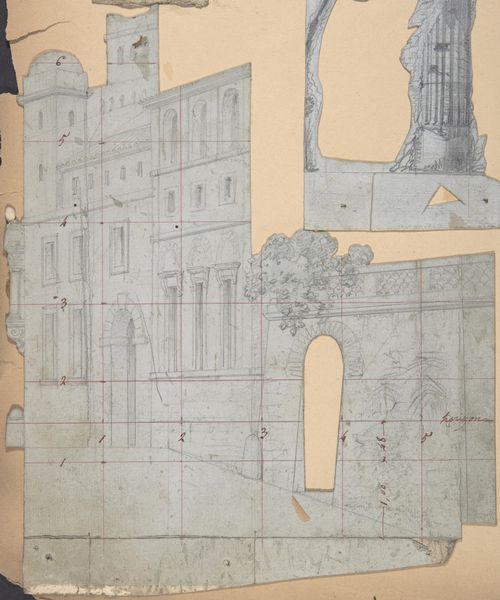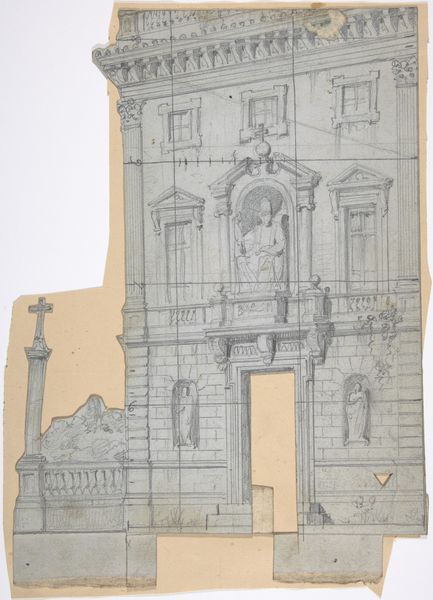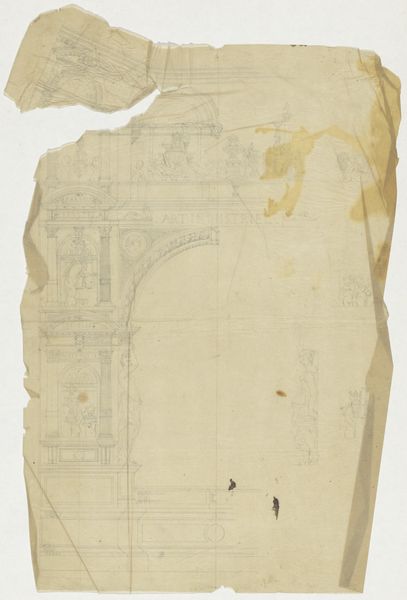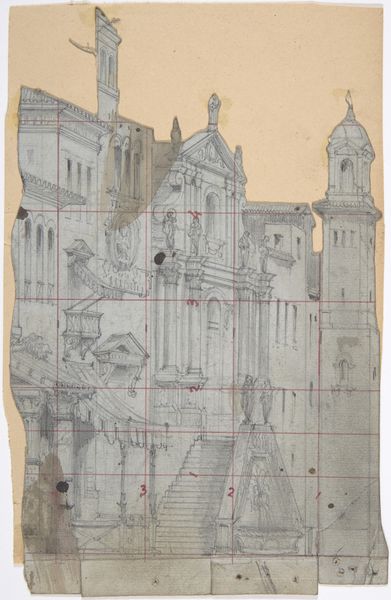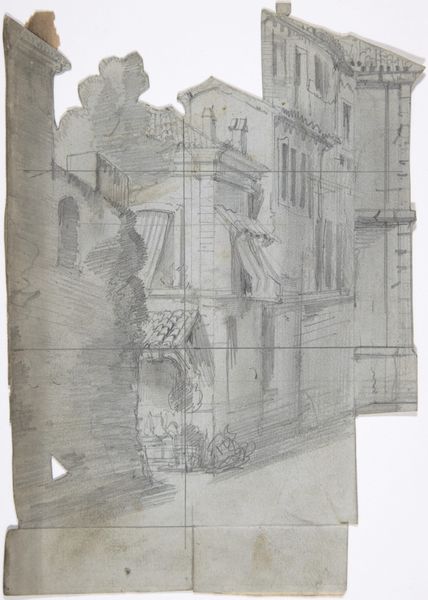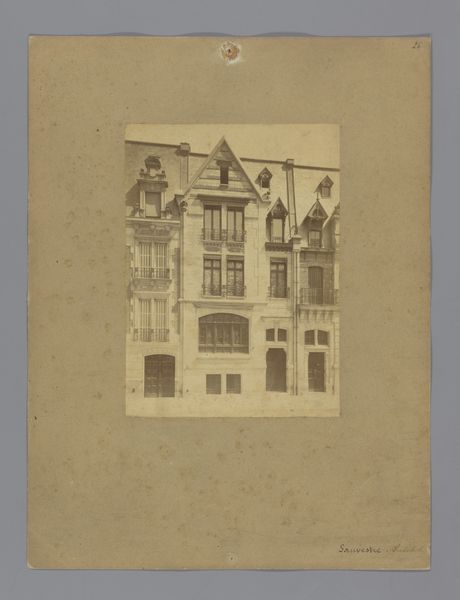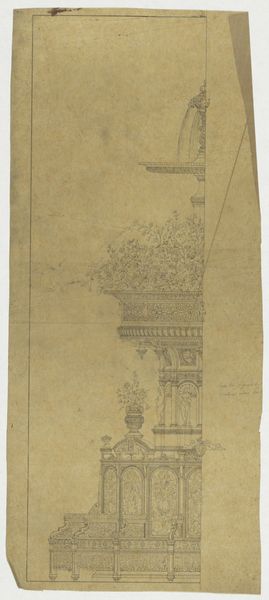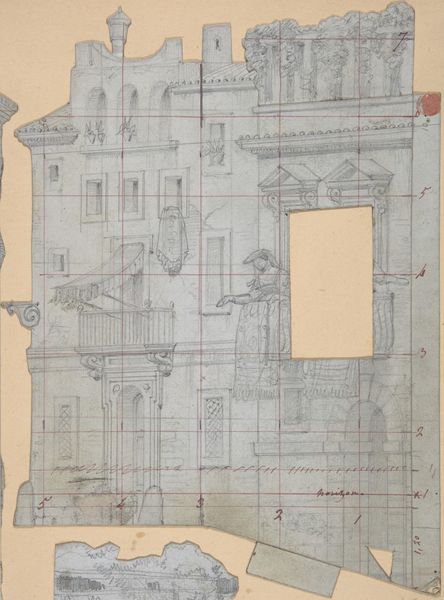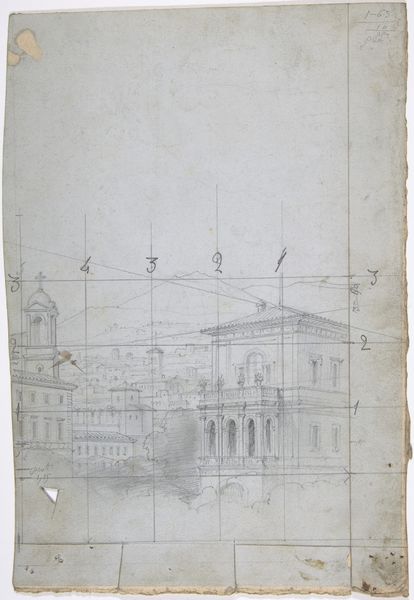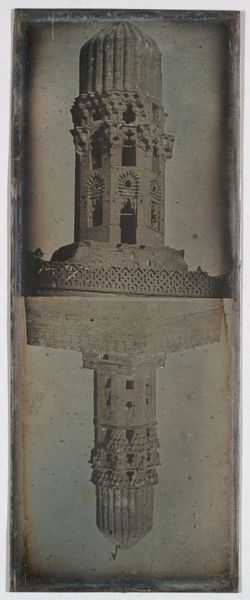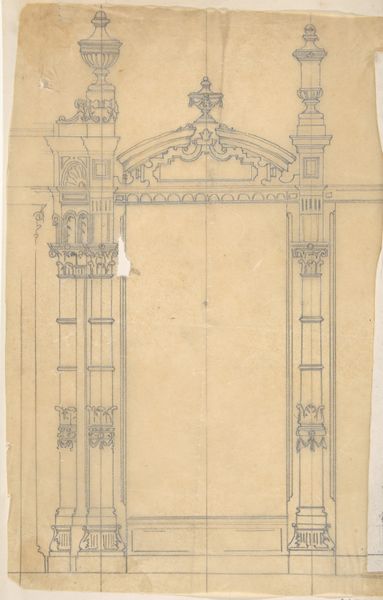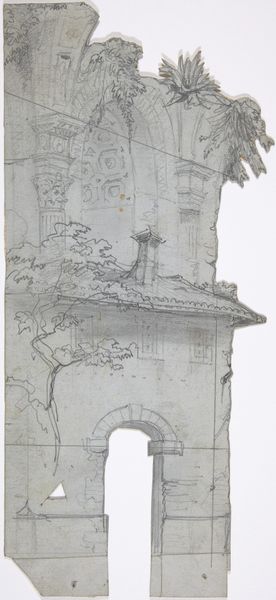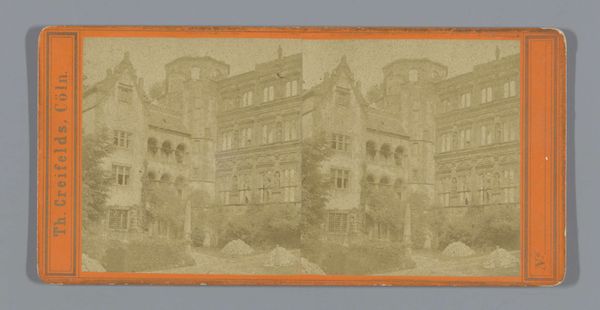
Design for a Stage Set at the Opéra, Paris 1830 - 1890
0:00
0:00
drawing, print, paper, pencil
#
drawing
#
neoclacissism
# print
#
paper
#
pencil
#
cityscape
Dimensions: Irregular sheet: 5 3/4 x 4 1/16 in. (14.6 x 10.3 cm)
Copyright: Public Domain
Curator: Before us is Eugène Cicéri's "Design for a Stage Set at the Opéra, Paris," dating from 1830 to 1890. It’s a pencil drawing and print on paper, showcasing a cityscape, and can be found at the Metropolitan Museum of Art. Editor: My first impression? It’s like a faded memory of a grandiose place. The pencil strokes are so delicate, almost ethereal, hinting at this incredibly structured environment with this beautiful, airy feel. Like looking at a ghost of an opera set. Curator: Precisely! The grid underlying the sketch emphasizes its preliminary nature, a structured foundation awaiting further artistic intervention. Notice how the neoclassical architecture dominates; the linear perspective guides the eye, creating depth. Semiotically, the cityscape signifies the cultural aspirations of the time, echoing societal values for order, reason, and civic pride, that being, Neo-Classicism, you see? Editor: I see… structure. A lot of structure, almost feels a bit clinical. But look closer; there’s a lightness, especially in the clouds sketched in. The city rises rigidly from them as if the set itself emerged spontaneously. And this incomplete nature; like the piece itself hints at an ungraspable ideal… something maybe even a bit dreamlike, do you agree? Curator: Indeed. The very medium — pencil on paper — juxtaposes against the subject, introducing the duality between permanence and ephemerality. It speaks of both ambition, represented through solid architecture, and fragility. Editor: It’s funny; for a piece about the opera, it's strikingly quiet. The stage is empty. I’m intrigued by this. What narratives might have unfolded here? And now only these lines of architectural ambition remain... Makes me imagine a long gone beautiful singer perhaps or a famous composer standing where now it's just an echo. Curator: A valid point. While we decode its visual grammar, it is essential to acknowledge that the lack of explicit narrative frees viewers to weave their personal interpretations onto this space. The composition beckons for introspection, creating an interactive, thought-provoking aesthetic experience. Editor: So, while it hints at a defined cityscape of the past, it is actually a mirror to our present imagination. We bring the Opera to life by stepping up. I like that thought! Curator: Absolutely. An enduring quality that defines its lasting artistic relevance and allows continuous contextual interpretation across centuries.
Comments
No comments
Be the first to comment and join the conversation on the ultimate creative platform.
